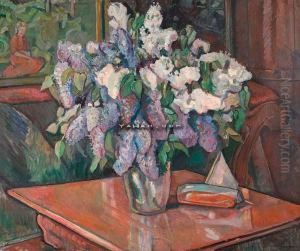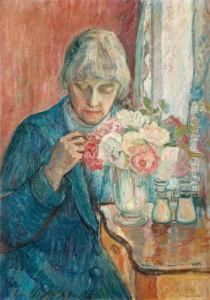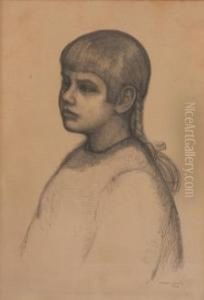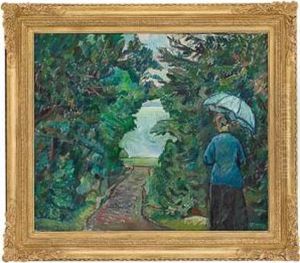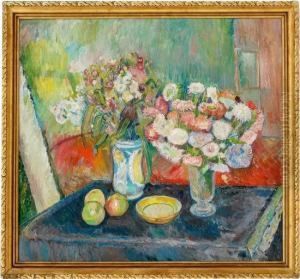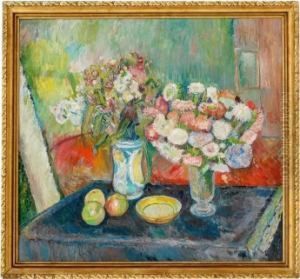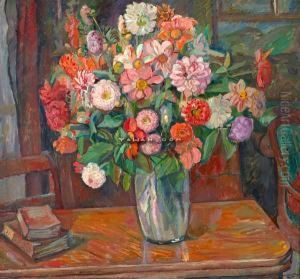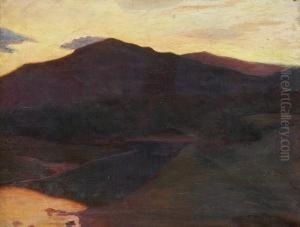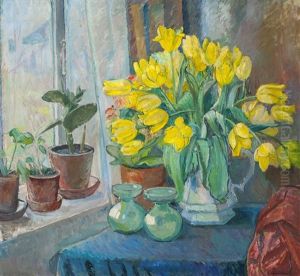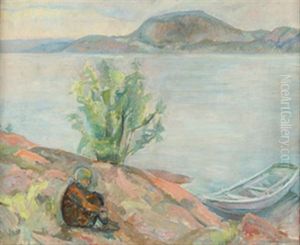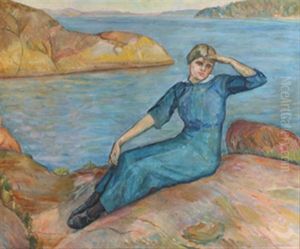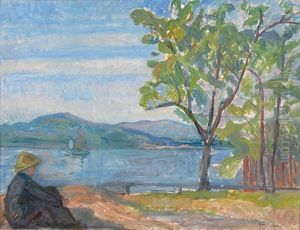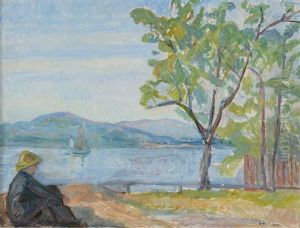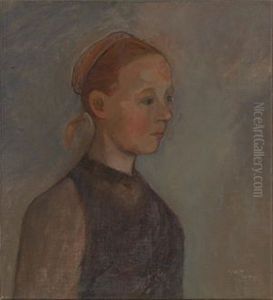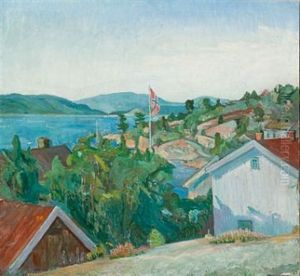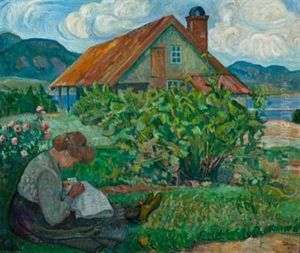Oluf Wold-Torne Paintings
Oluf Wold-Torne was a notable Norwegian painter born on October 27, 1867, in Kristiania, which is now known as Oslo, Norway. His artistic career is often associated with the transition from romanticism to realism in Norwegian art. Wold-Torne is particularly remembered for his landscape paintings and his ability to capture the serene and majestic qualities of the Norwegian countryside.
Wold-Torne began his formal art education at the Royal School of Art and Design of Kristiania (now the Oslo National Academy of the Arts) and later continued his studies in Paris at the Académie Colarossi. His time in Paris was influential, as he was exposed to the works of contemporary French artists, which would have an impact on his style and approach to painting.
His works often exhibit a particular sensitivity to light and atmosphere, characteristics that are reminiscent of the French Impressionists, though Wold-Torne maintained a distinctly Norwegian perspective. He was part of a generation of artists who were central to the development of a national identity in Norwegian art during the late 19th and early 20th centuries, a period when Norway was seeking to establish its own cultural voice following centuries of Danish and Swedish rule.
Wold-Torne's paintings often feature the Norwegian landscape, with a focus on the unique quality of light found in the Nordic country. His approach to landscape painting was less about grandiose, dramatic scenes and more about the quiet beauty of rural life and nature. He also painted portraits and interiors, showing a keen eye for detail and an ability to capture the mood of his subjects.
During his career, Wold-Torne exhibited his works at various venues, including the Autumn Exhibition (Høstutstillingen) in Kristiania and the Exposition Universelle in Paris. His contributions to Norwegian art were widely recognized, and he became a respected figure among his peers.
Oluf Wold-Torne's life was relatively short, as he passed away on June 3, 1919, at the age of 51. Despite his early death, his works continue to be celebrated for their contribution to the Norwegian artistic heritage and are displayed in numerous galleries and museums, including the National Gallery in Oslo. His legacy lies in the gentle and evocative landscapes that capture the essence of the Norwegian terrain and the spirit of a nation.

